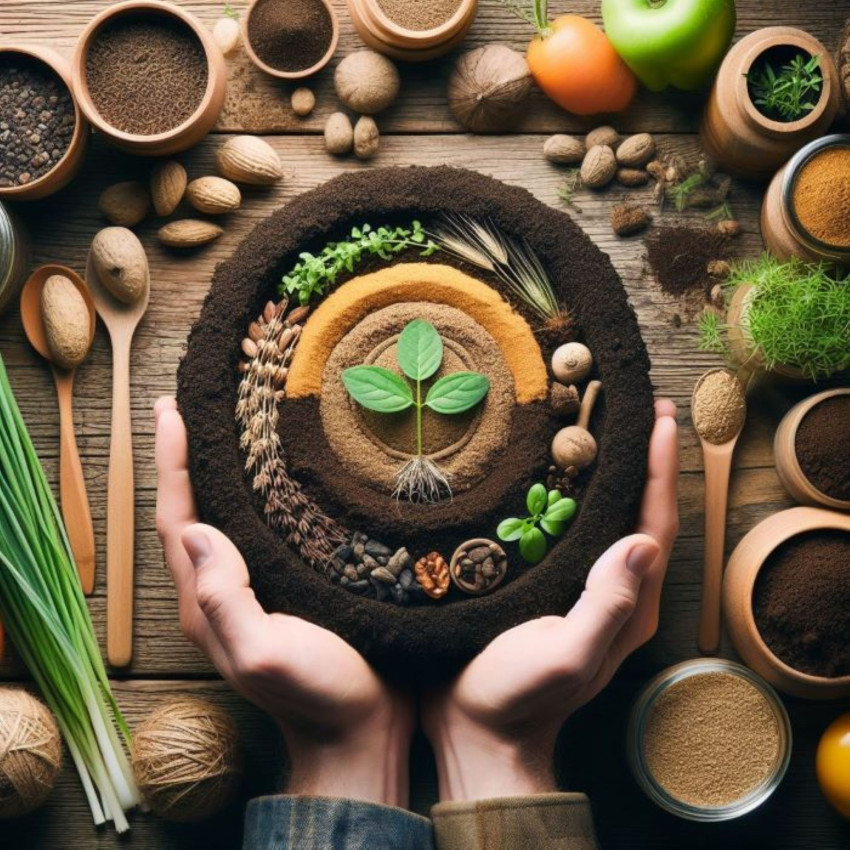
Good soil is crucial for your plants to grow well. It provides them with important nutrients and water. If your soil isn't right, your plants might not get what they need to grow and be healthy. This blog post explains the different types of garden soil and how you can mix them to give your garden the best chance of success.
Soil Types:
Sand Soil:
Description: Sandy soil has big particles and not many nutrients.
Impact: Water drains quickly, so plants have less time to take in nutrients.
Characteristics: Easy to work with, light, warms up fast.
Tip: Add things like compost to sandy soil to make it better for plants.
Silt Soil:
Description: Silt soil has small to medium-sized particles.
Impact: If not covered, it can wash away easily in rain or wind.
Characteristics: Fertile, keeps water well, feels smoother than sandy soil.
Tip: Fix any drainage issues before planting vegetables and fruits in silty soil.
Clay Soil:
Description: Clay soil has tiny particles, so it usually doesn't drain well.
Impact: It's fertile and holds nutrients, but it can become hard and is tough to work with.
Tip: With proper care, clay soil can be good for gardening.
Loam Soil:
Description: Loam is a mix of clay, silt, and sand.
Impact: It's fertile with good drainage, making it perfect for gardens.
Characteristics: Balances soil particles well, easy to manage with the right organic matter.
Having the right soil is vital for successful gardening. Understanding the types of soil and how to mix them can help your plants get the best start. Sandy soil drains quickly, silty soil retains water well, clay soil holds nutrients, and loam soil combines these qualities. By adding things like compost, you can enhance your soil and create an ideal environment for your garden to thrive.
Also Read : Top 10 Easy-Care Indoor Plants for Effortless Gardeners
How Does Drainage Impact Plant Growth?
Insufficient soil drainage can lead to standing water, effectively drowning your plants. When the soil retains excess water, it displaces oxygen, harming the roots and killing beneficial microorganisms.
Conversely, well-draining soils are warmer, host beneficial organisms, and boast good aeration. Mulching aids in soil drainage, making it conducive to optimal plant growth.
How to Determine Soil Type
- To identify your soil type, you can use various methods, and one practical approach is the jar test:
- Collect soil samples from different areas of your garden and combine them in a container.
- Take a cup of soil, use a sieve to eliminate debris, organic matter, and rocks.
- Place the soil in a clear jar.
- Fill the jar with water until it's 2/3 full, add a pinch of salt, and vigorously shake the mixture.
- Allow the solution to settle into layers (sand settles quickly, silt takes a few hours, and clay needs more time).
- Measure each layer with a ruler.
- Calculate the total length of the mixture.
For instance, if your soil is 1-inch deep in total, with ½-inch of sand, it means your soil is 50% sand. If there's a ¼-inch layer of silt, your soil contains 25% silt. The remaining 25% consists of clay.
How to Check Soil pH
Soil pH indicates whether the soil is acidic (lower pH) or alkaline (higher pH), with a neutral pH at 7. Plants thrive around a pH of 6.5, allowing them to access nutrients. Testing soil pH before planting is crucial, as it guides adjustments for optimal plant growth. Soil pH testing kits are available, and you can modify pH levels using lime to raise them or sulfur/aluminum sulfate to lower them.
Other Influences on Soil Conditions
Local Climate:
Temperature and precipitation affect soil formation. Regions with high rainfall tend to have more acidic soils than dry areas.
Relief of the Area:
Hilly areas may experience soil erosion, resulting in thin soils with fewer nutrients. In contrast, flat areas often have deep soils with higher nutrient levels as they receive deposits from hilly areas.
Understanding your garden's soil type is beneficial, guiding plant selection and soil amendments for optimal growth.
For additional plant care and gardening tips, plan your visit to Sai Nursery or contact us.




